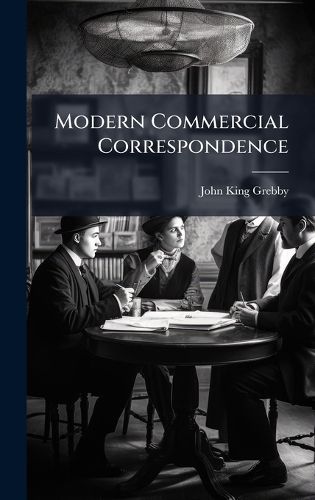Readings Newsletter
Become a Readings Member to make your shopping experience even easier.
Sign in or sign up for free!
You’re not far away from qualifying for FREE standard shipping within Australia
You’ve qualified for FREE standard shipping within Australia
The cart is loading…






Modern Commercial Correspondence, written by John King Grebby and originally published in 1909, provides a comprehensive guide to the art of effective business communication. This vintage manual offers valuable insights into the conventions and best practices of commercial correspondence during the early 20th century. Covering a range of topics, including letter writing, clarity in communication, and the nuances of business etiquette, this book serves as a fascinating historical resource.
Students of business history, communication, and language will find this volume particularly enlightening. "Modern Commercial Correspondence" not only illustrates the stylistic preferences of a bygone era but also underscores the enduring importance of clear and professional communication in the commercial world. Discover the time-tested techniques that shaped business practices and gain a unique perspective on the evolution of business writing.
This work has been selected by scholars as being culturally important, and is part of the knowledge base of civilization as we know it. This work was reproduced from the original artifact, and remains as true to the original work as possible. Therefore, you will see the original copyright references, library stamps (as most of these works have been housed in our most important libraries around the world), and other notations in the work.
This work is in the public domain in the United States of America, and possibly other nations. Within the United States, you may freely copy and distribute this work, as no entity (individual or corporate) has a copyright on the body of the work.
As a reproduction of a historical artifact, this work may contain missing or blurred pages, poor pictures, errant marks, etc. Scholars believe, and we concur, that this work is important enough to be preserved, reproduced, and made generally available to the public. We appreciate your support of the preservation process, and thank you for being an important part of keeping this knowledge alive and relevant.
$9.00 standard shipping within Australia
FREE standard shipping within Australia for orders over $100.00
Express & International shipping calculated at checkout
Modern Commercial Correspondence, written by John King Grebby and originally published in 1909, provides a comprehensive guide to the art of effective business communication. This vintage manual offers valuable insights into the conventions and best practices of commercial correspondence during the early 20th century. Covering a range of topics, including letter writing, clarity in communication, and the nuances of business etiquette, this book serves as a fascinating historical resource.
Students of business history, communication, and language will find this volume particularly enlightening. "Modern Commercial Correspondence" not only illustrates the stylistic preferences of a bygone era but also underscores the enduring importance of clear and professional communication in the commercial world. Discover the time-tested techniques that shaped business practices and gain a unique perspective on the evolution of business writing.
This work has been selected by scholars as being culturally important, and is part of the knowledge base of civilization as we know it. This work was reproduced from the original artifact, and remains as true to the original work as possible. Therefore, you will see the original copyright references, library stamps (as most of these works have been housed in our most important libraries around the world), and other notations in the work.
This work is in the public domain in the United States of America, and possibly other nations. Within the United States, you may freely copy and distribute this work, as no entity (individual or corporate) has a copyright on the body of the work.
As a reproduction of a historical artifact, this work may contain missing or blurred pages, poor pictures, errant marks, etc. Scholars believe, and we concur, that this work is important enough to be preserved, reproduced, and made generally available to the public. We appreciate your support of the preservation process, and thank you for being an important part of keeping this knowledge alive and relevant.